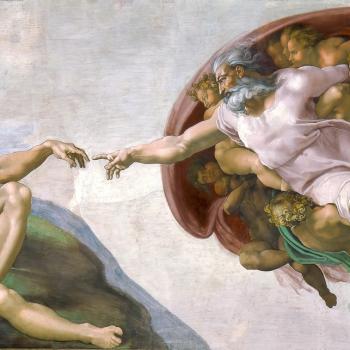For a few years in the 1970’s, I was the headmaster of Kipchimchim Harambee Secondary School at the western end of the great Rift Valley of Kenya. I also taught math, physics and Scripture. At one stage we were studying Luke’s gospel and we came upon the story of the boy Jesus being ‘lost’ in the Jerusalem temple. Chastened by an upset mother, we are told that he returned to Nazareth with his parents and was obedient to them. Then Luke adds, “And Jesus grew in wisdom and stature, and in favor with God and man.” In an earlier story, the presentation of the infant Jesus in the temple some 12 years before, we read, again in Luke, “And the child grew and became strong; he was filled with wisdom, and the grace of God was on him.”
Theses phrases led to a very interesting discussion. The students had no problem accepting that Jesus might have grown in age or size or physical strength but baulked at the idea that he progressed in wisdom or grace. After all, wasn’t he divine? Wasn’t he God-incarnate? Wasn’t he God’s only son? Ipso facto, he must have been omniscient and, thus, wouldn’t have needed to grow in wisdom or in grace. So, I teased them and asked, “Do you think Jesus could speak Kipsigis (the local language) or Japanese or Portuguese? Did he know the height of Kilimanjaro? (which lies on the Kenya/Tanzania border)? Could he solve a quadratic equation? Or recite Boyle’s law?”
Jesus as a real, incarnated human, was not omniscient. Moreover, he sometimes got things wrong e.g., in Matthew chapter 15, when he, at first, refused to heal the Canaanite woman’s seriously-ill daughter, saying dismissively, “I was only sent to the lost sheep of the house of Israel…It is not fair to take the children’s food and throw it to the dogs.” As well as using mixed metaphors, it was an extraordinarily-insulting and narrow-minded retort to a suffering mother. So, God whacked him upside the head and he finally acknowledged that he found her faith to be amazing.
In another encounter, John 4:22, in a very judgmental encounter with a ‘sinful’ Samaritan woman at a well, he pompously says, “You Samaritans worship what you do not know; we worship what we do know, for salvation is from the Jews.” He was still learning and still somewhat stuck in cultural and religious prejudices. He was fallible; and sometimes he was fearful; otherwise he couldn’t have been an exemplar for us. He wasn’t just God-pretending-to-be-human. When he cried out on the cross, “My God, my God why have you abandoned me?!” he wasn’t just quoting Psalm 22; he was really in distress. In the Garden of Gethsemane, the night before, he had the mother of all panic attacks; fear so intense that he literally sweated blood.
With my Kipchimchim students, I tried to illustrate visually what Jesus’ wisdom and grace looked like. I took a balloon and blew into it. I then asked, “is there any space in this balloon that doesn’t have air in it?” They correctly answered, “No.” I blew some more, increasing its volume and repeated my question. Once again, the answer was, “No!” A third time I inflated the balloon and asked once more. They averred that there was no empty space in it. Then I asked, “Is the balloon the same size as it was when I had first blown into it?” They shouted, “No, it is much bigger now.” I told them, “that is what it was like for Jesus to grow in wisdom and grace. At no stage of his life was there a discrepancy between his potential and his actualizing of it. There was no ‘empty space’ in him; no gap between what, on the one hand, God and life was teaching him and, on the other hand, his instant willingness to embrace it.”
That’s what perfection (telos) really means; to be radically committed to the mission for which one has volunteered and incarnated. Perfection is not about a stainless-steel sinlessness; it isn’t about not making mistakes; it is about the radical devotion to one’s life purpose. It is the acorn hell-bent (pardon the phrase!) on becoming an oak tree.
Part of Jesus’ growth was to, initially, buy into the mythology of Moses and the 613 precepts of Torah but to, eventually, reinterpret the meaning of these laws. In his own words, he came not abolish the Law but to bring it to fulfillment. But look at what ‘fulfillment’ meant to him. Again, and again, almost like a mantra, he would proclaim, “you have heard that it was said to the people of old…but I say to you…” Then he would go on to take issue with some of the most important precepts e.g., an eye for an eye, the uneven field of divorce, the Sabbath rest, the death penalty for adultery. In conclusion, he would say that the Law was made to serve humans not the other way around.
You could say that Jesus was to Moses as Einstein was to Newton.













